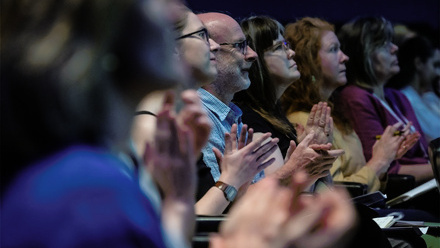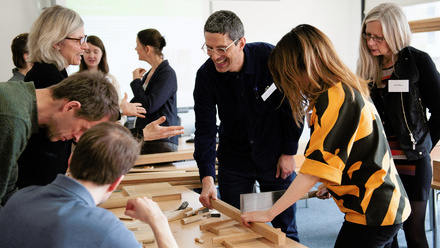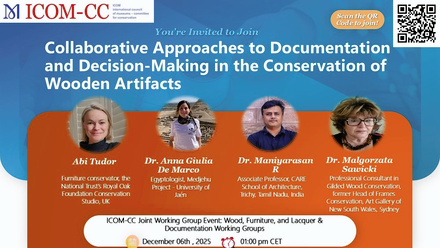The event is on Tuesday 27 June and is being organised jointly with the Archaeological Leather Group.
It will be held at the Museum of London Resource Centre, Mortimer Wheeler House, London N1 7ED, and online. Please note that in-person spaces are limited to 80 people.
A provisional programme and list of presentations is given below:
Session 1: 10:30 – 11:40
Skin City: London's medieval leather trades
Freelance curator Jackie Keily, brings the disciplines of archaeology and history together in her study of the evidence for the medieval leather trade in the City of London. Over the past sixty years large quantities of medieval leather have been recovered in London. They have added enormously to our knowledge of the leatherworking crafts and how styles and fashions changed through the medieval period. This presentation investigates the evidence for the leather trades in medieval London and what their impact on the City and its environment might have been. It also investigates why some trades evolved into large and powerful trade guilds, whilst others all but disappeared.
The art of choosing or changing - species selection for leather production in Vendel Period and Viking age Scandinavia
Stella Carlson, MA Archaeology student at Uppsala University in Sweden will focus on the analysis of archaeological leather from Vendel Period and Viking Age boat graves at Valsgärde in Uppland, Sweden, which were excavated between 1928 and 1954. These boat graves are the burial places of the elite and include weapons and armour of gold and precious stones, along with domestic items. Quantities of organic material have been preserved, including much leather. Leather samples from Valsgärde artefacts were analysed using the ZooMS method. The aim was to identify which animals were used to produce the leather and whether the leather was local or imported. The question of a correlation between high-status objects and leather from specific animals will also be discussed.
Investigating ancient Egyptian leather ‘mummy braces’, tabs and pendants - animal provenance and production processes
Lucy Skinner, a PhD candidate at the University of Northampton and the British Museum, investigates mummy braces (stola), the long ribbons of red leather that were sometimes placed across the chests of mummies. The use of these was a feature of the Third Intermediate Period in Egypt (1069-664 BC). The presentation focuses in particular on the rectangular tabs or pendants that formed the terminals of the braces. Often these are the only element that survives. Sixteen tabs or pendants at the British Museum, and a mummy brace set at the Petrie Museum have been investigated using morphometric methods, molecular analysis, and imaging techniques. Results show the predominant use of gazelle skin, red madder colourant, and the standardised leather production methods and embossing techniques that were used to create these decorative items.
Session 2: 12:20 – 13:05
Conservation and scientific analysis of paint remains on leather, recovered from a Barracuda aircraft wreck
Angela Middleton, Quita Mould, Sarah Paynter, Francesca Gherardi and Diana Davis ACR
Angela Middleton, Senior Archaeological Conservator and Diana Davis ACR, Head of Conservation at the National Museum of the Royal Navy (NMRN) will discuss the conservation and scientific analysis of paint remains on leather artefacts recovered from the wreck of a Mk. II Fairey Barracuda aircraft. There are no surviving Barracuda aircraft, so these remains are highly significant. The work presented here was undertaken by Historic England on behalf of the NMRN. The aims were to conserve and stabilise the leather so that it may be studied and displayed, and to analyse remaining paints, adhesives and other residues to identify specific manufacturers and to aid in the identification of the aircraft wreck remains. The wider Barracuda project at the NMRN aims to reconstruct a Barracuda aircraft, using original material salvaged from the wreck and now conserved.
Do no harm: detecting damage to DNA in skin caused by conservation treatments
Lu Allington-Jones, Senior Conservator and Ranbir Bailey, Molecular Biology Laboratory Manager, at the Natural History Museum, London, will present their investigations into the effect of conservation treatments on DNA. Preservation of DNA is essential for the ongoing scientific analysis of archaeological, ethnographic and natural history collections. The loss of data that could occur if DNA retrieval is impaired must be acknowledged and steps taken to avoid this. In this project, DNA was extracted from bird skins treated with common conservation chemicals. Thirty-two remedial treatments were tested to identify high- and low-impact techniques, in order to guide conservation decision-making and enable the development of informed treatment plans. Such considerations must be factored into arguments regarding the preservation of morphology and aesthetics against authenticity and access. Although this project studied fresh dried skin, it has significant implications for the treatment of leather.
Recorded presentation
Session 3: 14:10 – 15:35
Logging the Backlog: The start of a large conservation project focused on a collection of archaeological Roman leather in the Netherlands
Fixing past problems: securing the future of ancient leather
Don’t sweat the small stuff: a review of recent remedial techniques on mammal taxidermy at the Natural History Museum, London
Efstratia Verveniotou, Arianna Bernucci, Lu Allington-Jones, Lauren Burleson, Chelsea McKibbin ACR and Claire Kelly
Efstratia Verveniotou and Arianna Bernucci, Senior Conservators at the Natural History Museum, present this discussion on the Mammal Corridor Conservation Project at the NHM. 88 taxidermy specimens had suffered extensively from light damage, loss due to past infestations and deterioration due to aging of the substrate and past conservation treatments. This paper examines the range of conservation processes that were employed and the reasoning behind these. Close consultation with curators helped inform decisions about treatments, ensuring that these would not intervene with future analysis, while still making the specimens suitable for display. Multiple repair and patching techniques for the skin were employed along with a number of fur replication techniques. The treatments were tailored to specimen needs, while maintaining the display integrity and the scientific value of this important collection.
Conserving a Leather Book Cover from the Gloucester Shipwreck, 1682
Scarlett Crow, Assistant Conservator, York Archaeology, presents a poster on her conservation of a leather book cover, one of the many important artefacts recovered from the flagship HMS Gloucester, shipwrecked in 1682, near the Norfolk coast. This ship, carrying the future James II, was rediscovered in 2007. Many significant artefacts were recovered, including quantities of organic material. Amongst these were the remains of a leather book cover. The conservation and investigation of the book cover are addressed in this poster. The book cover is currently on display at Norwich Castle Museum in the exhibition The Last Voyage of the Gloucester.
Short Presentation + Poster
Leather-covered Scabbards and Sword Hilts from the Citadel of Damascus
Short Presentation
Session 4: 16:00 – 16:55
Re-treatment of archaeological leather from the Roman fort Trimontium
Reconstruction of the leather shoes of the Civil War submarine, H.L. Hunley
Melissa Allen, conservator at The Warren Lasch Conservation Center, South Carolina, USA will discuss the conservation of leather shoes belonging to crew members of the H.L Hunley, a civil war confederate submarine, sunk in battle in 1864. The submarine was raised in 2000 and excavated by 2006. The Warren Lasch Conservation Center serves as the repository for the collection of the H.L. Hunley Submarine (1864) Project. Over 3000 objects were recovered from the submarine including the leather shoes of the eight crew members. Six out of the eight pairs of shoes can be identified as standard Civil War footwear for soldiers, while the others are civilian-type footwear. The shoes have been excavated, documented, and partially conserved through freeze-drying. The final phase of treatment involving the support and reconstruction of these fragile artefacts is currently underway as are plans for their storage and display.
Recorded Presentation



